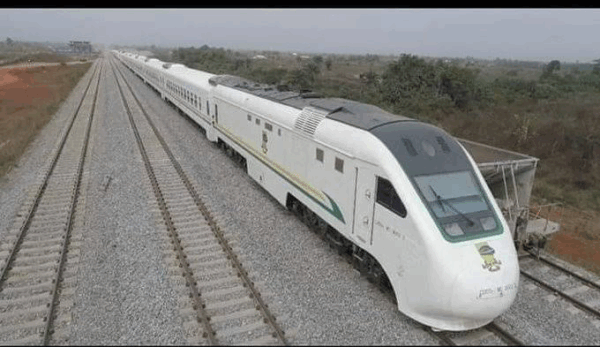Nigeria is embarking on one of the most ambitious infrastructure projects in its contemporary history: the construction of a high-speed rail network spanning 4,000 kilometers, connecting the western corridor (Lagos) to the eastern corridor (Port Harcourt) and incorporating several strategic regional links.
The route, currently being finalized, is designed to accommodate trains running at commercial speeds of 200 to 250 km/h, with a fully electrified double-track infrastructure. The most densely populated sections are expected to incorporate an ETCS level 2 signaling system (European Train Control System), coupled with centralized traffic control.
The planned trains would be electric multiple units (EMU) with high capacity, featuring modular compositions of 8 to 16 cars. All rolling stock and control systems would come from Chinese suppliers, in collaboration with the financial contractor China Liancai Petroleum Investment Holdings.
The construction includes:
– A rail platform adapted to axle loads of 17 to 20 tonnes.
– Major civil engineering works, including bridges over the Niger River and its tributaries, as well as viaducts in coastal areas prone to flooding.
– Electrical systems with power substations every 50 to 70 km.
– Interconnections with the existing rail network, particularly for heavy freight and still-operating meter-gauge lines.
Financial structuring and cost breakdown:
The total announced cost of 60 billion dollars is based on a financing scheme that includes:
– Concessional loans from Chinese financial institutions, backed by Nigerian sovereign guarantees.
– Limited equity contribution from De-Sadel Nigeria (local project owner), complemented by a structured financing arrangement supported by China Liancai Petroleum Investment Holdings.
– A potential supplier credit component covering the supply of rolling stock, signaling equipment, and technical expertise.
According to sources close to the project, the annual debt service could reach 3 to 4 billion dollars over a repayment period of 15 to 20 years, depending on the applied interest rates.
Phasing and schedule:
The project is planned in three phases:
– Western Phase: Lagos – Ibadan – Ilorin, approximately 700 km, with an expected opening in 3 years.
– Central Phase: Ilorin – Abuja – Makurdi, 1,500 km, with simultaneous launch but staggered commissioning.
– Eastern Phase: Makurdi – Enugu – Port Harcourt, 800 km, including industrial connections to ports and free trade zones.
Completed sections would be partially put into commercial operation to generate revenue before the overall network completion.
Energy innovation and locomotive conversion:
Simultaneously, De-Sadel is leading a program to convert part of the existing diesel fleet to liquefied natural gas (LNG) and compressed natural gas (CNG). The Ministry of Petroleum Resources has committed to providing the necessary gas for both construction needs (construction equipment) and converted locomotives. This measure aims to reduce dependence on imported diesel and stabilize operating costs.
Macroeconomic challenges and risks:
While the project is presented as a catalyst for national economic integration and interregional logistics, it raises several critical points:
– Almost total technological dependence on Chinese suppliers, limiting local industrial transfer.
– Impact on the balance of payments through massive imports of equipment and services.
– Debt sustainability risk if operating revenues do not cover the annual debt service.
– Limited effect on local employment during the construction phase, as specialized technical positions are mostly outsourced.
Ultimately, the project’s success will depend on its ability to generate sufficient passenger and freight traffic to justify construction costs, while integrating sustainable maintenance strategies to prevent rapid infrastructure degradation – a recurring weakness in African railway projects.



2 Comments
Not necessary, we Africa must learn to depend on ourselves for our needs.
It is interesting to note that this lies has no government official name attached to it. You people have lost credibility. There is no way a project of such magnitude will be planned without the public be in the know besides the distance between Lagos and Porthacourt is even up 2000km. You people should buried yourselves in shame.